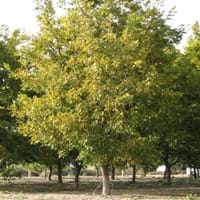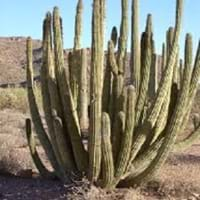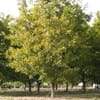Life Span
Perennial
Perennial
Type
Tree
Cactus or Succulent
Origin
Southeastern United States, Central United States, South-Central United States, Mexico
Southwestern United States, Mexico
Types
Elliot Pecan, Gafford Pecan
Not Available
Number of Varieties
Not Available
Habitat
Loamy soils, Moist woods, Tropical regions
Dry areas, Hillside, Semi desert
USDA Hardiness Zone
5-9
Not Available
Sunset Zone
2b, 3a, 3b, 6, 7, 8, 9, 10, 12, 13, 14, 18, 19, 20
9, 10, 11, 12, 13, 14, 15, 16, 17, 18, 19, 20, 21, 23, 24
Habit
Upright/Erect
Clump-Forming
Flower Color
Yellow, Green
White, Lavender
Flower Color Modifier
Bicolor
Not Available
Fruit Color
Tan, Brown
Red
Leaf Color in Spring
Green
Not Available
Leaf Color in Summer
Green
Not Available
Leaf Color in Fall
Yellow
Not Available
Leaf Color in Winter
Not Available
Not Available
Leaf Shape
Pinnate
Linear
Plant Season
Spring, Summer, Fall
Spring, Summer, Fall, Winter
Sunlight
Full Sun
Full Sun
Type of Soil
Loam
Loam, Sand
The pH of Soil
Acidic, Neutral
Neutral
Soil Drainage
Well drained
Well drained
Bloom Time
Spring
Not Available
Tolerances
Not Available
Drought
Where to Plant?
Ground
Ground, Pot
How to Plant?
Seedlings, Stem Planting
Seedlings
Plant Maintenance
Medium
Medium
Watering Requirements
Requires watering in the growing season, Use Mulches to help prevent water loss during hot and windy weather, Water more in summer
Do not water frequently, Does not require lot of watering, Water occasionally
In Summer
Lots of watering
Lots of watering
In Spring
Moderate
Moderate
In Winter
Average Water
Average Water
Soil pH
Acidic, Neutral
Neutral
Soil Type
Loam
Loam, Sand
Soil Drainage Capacity
Well drained
Well drained
Sun Exposure
Full Sun
Full Sun
Pruning
Cut upper 1/3 section when young to enhancegrowth, Remove dead branches
Remove damaged leaves, Remove dead branches, Remove dead leaves
Fertilizers
Apply 10-10-10 amount, Nitrogen, Zinc fertilizers
All-Purpose Liquid Fertilizer
Pests and Diseases
Crown rot, Leaf curl, Leaf spot, Red blotch, Snails, Squirrels
Red blotch
Plant Tolerance
Heat Tolerance, Humidity, Shade areas, Soil Compaction
Drought
Flowers
Insignificant
Showy
Flower Petal Number
Not Available
Single
Foliage Texture
Medium
Bold
Foliage Sheen
Matte
Not Available
Self-Sowing
No
Not Available
Attracts
Birds, Deers, Squirrels
Hummingbirds
Allergy
Rhinitis, Sinuses
Skin irritation, sneezing
Aesthetic Uses
Cottage Garden
Not Used For Aesthetic Purpose
Beauty Benefits
Hair Conditioner, Making cosmetics, Reduce Bruises
Not Available
Environmental Uses
Air purification, Nesting sites for birds, Shadow Tree
Air purification
Medicinal Uses
Alzheimer’s Disease, Antidepressant, Anti-oxidant, Appetite enhancer, Cardiovascular problems, Detoxifies lever, Diabetes, Gallbladder Diseases, Gout, Strengthen gums, tuberculosis
Not Available
Part of Plant Used
Bark, Fruits
Not Available
Other Uses
Air freshner, Application in Furniture, used for making charcoal, Used in making musical instruments, Used in paper industry
Showy Purposes
Used As Indoor Plant
No
Yes
Used As Outdoor Plant
Yes
Yes
Garden Design
Fruit / Fruit Tree, Shade Trees
Container, Feature Plant, Houseplant, Rock Garden, Wall
Botanical Name
CARYA illinoinensis
STENOCEREUS thurberi
Common Name
Papershell Pecan, Pecan
Organ pipe Cactus
In Hindi
पेकॉन
Organpipe cactus
In German
Pekannuss
Organpipe cactus
In French
Pacanier
Orgue cactus
In Spanish
Carya illinoinensis
Cactus del tubo de órgano
In Greek
Pecan
Εκκλησιαστικό όργανο κάκτος
In Portuguese
Nogueira-pecã
Cacto da tubulação de órgão
In Polish
Orzesznik jadalny
Organ Pipe Cactus
In Latin
Pecan
Organum Pipe cactus
Phylum
Magnoliophyta
Not Available
Class
Magnoliopsida
Magnoliopsida
Order
Juglandales
Caryophyllales
Family
Juglandaceae
Cactaceae
Genus
Carya Nutt.
Stenocereus
Clade
Angiosperms, Eudicots, Rosids
Angiosperms, Core eudicots, Eudicots
Tribe
Juglandeae
Pachycereeae
Subfamily
Juglandoideae
Cactoideae
Number of Species
Not Available
Importance of Pecan and Organpipe Cactus
Want to have the most appropriate plant for your garden? You might want to know the importance of Pecan and Organpipe Cactus. Basically, these two plants vary in many aspects. Compare Pecan and Organpipe Cactus as they differ in many characteristics such as their life, care, benefits, facts, etc. Every gardener must at least have the slightest clue about the plants he wants to plant in his garden. Compare their benefits, which differ in many ways like facts and uses. The medicinal use of Pecan is Alzheimer’s Disease, Antidepressant, Anti-oxidant, Appetite enhancer, Cardiovascular problems, Detoxifies lever, Diabetes, Gallbladder Diseases, Gout, Strengthen gums and tuberculosis whereas of Organpipe Cactus is Not Available. Pecan has beauty benefits as follows: Hair Conditioner, Making cosmetics and Reduce Bruises while Organpipe Cactus has beauty benefits as follows: Hair Conditioner, Making cosmetics and Reduce Bruises.
Compare Facts of Pecan vs Organpipe Cactus
How to choose the best garden plant for your garden depending upon its facts? Here garden plant comparison will help you to solve this query. Compare the facts of Pecan vs Organpipe Cactus and know which one to choose. As garden plants have benefits and other uses, allergy is also a major drawback of plants for some people. Allergic reactions of Pecan are Rhinitis and Sinuses whereas of Organpipe Cactus have Skin irritation and sneezing respectively. Having a fruit bearing plant in your garden can be a plus point of your garden. Pecan has no showy fruits and Organpipe Cactus has showy fruits. Also Pecan is not flowering and Organpipe Cactus is not flowering . You can compare Pecan and Organpipe Cactus facts and facts of other plants too.





